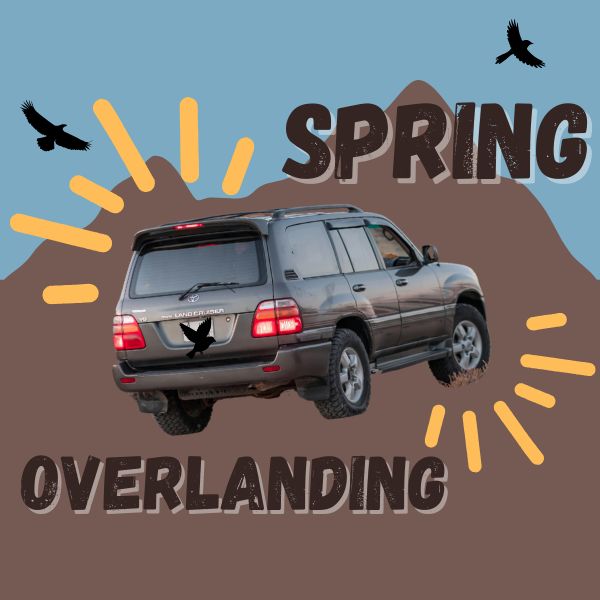As snow melts off the peaks of the Sierra Nevada mountains, trails previously hidden by layers of ice become uncovered. New activities come into season, and the 2024-25 ski season becomes a memory. One popular spring and summer activity for car nerds is offroading, especially in rural and forested areas. Offroading is just driving your car on any unpaved road (as the name suggests), but sometimes referring to offroading is closer to “overlanding,” which is exploring remote areas often with capable vehicles.
There are many different types of offroading vehicles on the market that can take adventures to the next level. From high clearance trucks to pricey rock crawlers, there are so many choices, but one of the most tried and true vehicles are the SUVs ready for any overlanding adventure.
Now, why would you want an offroading SUV? What is the appeal when there are so many other vehicles able to carry you through your rocky terrain? A list made by Pedal Commander said that a truck is great for cargo, clearance, and traction control, but there are downsides. The SUV generally has better fuel efficiency, more comfort in the cab, and general maneuverability. Maneuverability is critical when it comes to tight turns and thin passes, and is a crucial part of choosing a vehicle for what you are going to do. It is also easier to use SUVs in other capacities, especially for families or hauling friends, where a truck will fall short.
There are many good cars used in overlanding, some becoming classics as the years go on, and some are just good because they’re good. Some popular offroading SUVs include the Toyota Land Cruiser, the Toyota 4Runner, the Toyota FJ Cruiser, the Ford Bronco, the Isuzu Trooper, the Mitsubishi Montero, the Range Rover, the Jeep Wrangler, the Chevrolet Tahoe, the Suzuki Samurai, and many others. Of course, you could go for your own style, and put together your own car.
Offroading is very multifaceted, from getting through some snow or rock crawling in the Maze in Utah. A car isn’t one size fits all, and there are lots of things to look for when buying. In a list from Don Moore Toyota, it is suggested that you pay attention to underbody protection, tires & traction, axle articulation (Ramp Travel Index), drivetrain (AWD or 4WD), ground clearance, water fording depth, departure angle, break over angle and approach angle, differential locking, and torque.
Aside from the features of an SUV, your personal price range is very important to keep in mind with offroading SUVs. The vehicle itself, as well as repairs, maintenance, registration, and even recovery gear needs to be factored in when making a purchase.
Recovery gear is essential for offroading, even if you aren’t going very far. You never know when an unexpected patch of mud will come up or if you’ll slide down an especially steep hill. Gear can be anything from some shovels thrown in the back to a custom winch (to pull out your car) attached to the front of your vehicle. Some smart additions other than those two may be a tow rope, shackles, and traction boards (to get out of mud or a stuck tire). It is easy to fall down the rabbit hole of custom and expensive gear, but just having the essentials can make a world of difference.
There is a lot to consider when buying an offroading vehicle, but for many, an SUV is a good call that can be made even better with some more time and effort put in. Make sure that your vehicle meets your needs, and then get out there; exploring awaits.

